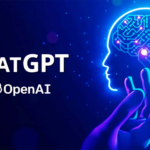✅ Introduction: The Data-Driven AI Revolution
Artificial Intelligence (AI) is transforming industries, from healthcare and finance to e-commerce and entertainment. However, the effectiveness and accuracy of AI models hinge on one crucial element: data. In this data-centric era, empowering AI with high-quality, diverse, and properly managed data is the key to unlocking its full potential.
In this article, we’ll explore:
- Why data is the lifeblood of AI innovation.
- How quality and quantity of data impact AI performance.
- The role of data in machine learning (ML) model training.
- Emerging trends and challenges in AI data management.

✅ 1. The Role of Data in AI Innovation
AI systems rely heavily on large volumes of structured and unstructured data to learn, adapt, and make accurate predictions. Without quality data, even the most advanced AI algorithms fail to deliver reliable results.
🔹 How AI Uses Data
- Training: During the training phase, AI models analyze massive datasets to recognize patterns, correlations, and trends.
- Inference: Once trained, the AI system uses new data to make predictions or decisions.
- Continuous Learning: Through real-time data feeds, AI systems can evolve, refining their accuracy over time.
🔹 Why Quality Data Matters
Poor-quality data leads to:
- Bias and inaccuracy: Incomplete or unbalanced datasets can cause AI models to produce biased outcomes.
- Reduced efficiency: Models trained on irrelevant data require more processing power and time, impacting performance.
- Faulty predictions: Inadequate data diversity results in incorrect or unreliable predictions.
✅ 2. Types of Data Used in AI Models
To achieve accuracy and reliability, AI models require a combination of various data types:
🔹 1. Structured Data
- Definition: Organized data stored in databases with clear labels (e.g., customer names, dates, purchase history).
- Example: Financial transactions, healthcare records, or product inventories.
🔹 2. Unstructured Data
- Definition: Raw data without a predefined format.
- Example: Images, videos, audio files, and social media posts.
- Use Case: Natural Language Processing (NLP) models rely heavily on unstructured text data to improve language understanding.
🔹 3. Semi-Structured Data
- Definition: A blend of structured and unstructured data, often with metadata.
- Example: Emails (with headers and body content) or JSON/XML files.
✅ 3. Data Collection & Preparation: The Foundation of AI
Before feeding data into AI models, it must be cleaned, organized, and pre-processed.
🔹 Steps in AI Data Preparation
- Data Cleaning: Removing duplicates, fixing errors, and addressing missing values.
- Data Labeling: Assigning tags or labels to data points to help AI recognize patterns.
- Data Augmentation: Generating synthetic data to expand training datasets and enhance model accuracy.
- Data Normalization: Standardizing data formats for consistency.
🔹 Best Practices for Data Collection
- Diverse Data Sources: Use data from multiple platforms to reduce bias.
- Real-Time Data Streams: Improve model adaptability with live data inputs.
- Ethical Data Use: Follow data privacy regulations like GDPR and CCPA.
✅ 4. The Impact of Data Quality on AI Accuracy
The quality of data significantly influences AI model performance.
🔹 Key Data Quality Metrics
- Completeness: Ensures no missing values or gaps.
- Consistency: Maintains uniformity across data entries.
- Relevance: Uses only relevant data for training.
- Timeliness: Incorporates the most recent and accurate data.
🔹 Real-World Example: AI in Healthcare
In healthcare, AI models trained on accurate and diverse patient data can:
- Detect diseases early through predictive analytics.
- Improve diagnostics with medical imaging AI.
- Personalize treatments by analyzing patient histories.
✅ 5. Emerging Trends in AI Data Management
As AI continues to advance, new trends are shaping the way data is managed and utilized.
🔹 1. Synthetic Data Generation
- What It Is: Artificially created data used to train AI models when real data is scarce.
- Use Case: Enhancing privacy in medical AI applications by generating fake yet realistic patient data.
🔹 2. Federated Learning
- What It Is: AI model training across decentralized devices without exchanging raw data.
- Use Case: Google’s Gboard uses federated learning to improve typing predictions without sending private data to central servers.
🔹 3. Automated Data Labeling
- What It Is: AI-assisted tools that automatically annotate large datasets.
- Use Case: In computer vision, automated labeling reduces human intervention and accelerates model development.
✅ 6. Challenges in AI Data Management
Despite the advantages, AI data management poses several challenges:
🔹 1. Data Bias
- Biased data leads to inaccurate and unfair predictions.
- Solution: Use diverse and representative datasets to minimize bias.
🔹 2. Data Privacy & Security
- Growing concerns over data privacy regulations.
- Solution: Implement data anonymization techniques and encryption protocols.
🔹 3. Data Scarcity
- Lack of sufficient data for niche AI applications.
- Solution: Use data augmentation and transfer learning techniques.
✅ 7. Best Practices for Leveraging Data in AI
To maximize AI effectiveness, businesses should follow these best practices:
- Prioritize Data Quality: Regularly audit and clean datasets.
- Use Data Annotation Tools: Improve model accuracy with properly labeled data.
- Leverage Big Data Platforms: Use platforms like Apache Spark and Google BigQuery for large-scale data processing.
- Adopt Cloud-Based Data Management: Ensure scalability and accessibility with cloud storage solutions.
✅ Conclusion: Data Is the Catalyst for AI Innovation
AI’s success depends on the quality, diversity, and accessibility of data. By implementing effective data collection, preparation, and management strategies, businesses can unlock AI’s full potential. As technology evolves, emerging data trends will continue to shape the future of AI, making it more accurate, reliable, and impactful.
✅ Key Takeaway: To empower AI innovation, organizations must invest in data-driven strategies, adopt advanced data management techniques, and prioritize data quality.




